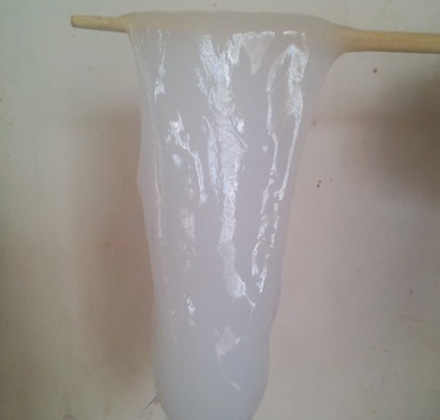Fracturing is one of the main facilities for increasing oil and gas wells. Fracturing is the use of high-pressure pump fracturing fluid injected into the formation, the formation of cracks and the expansion of new cracks and fill proppant, thereby enhancing the permeability of the formation. After the fracturing process equipment is determined, the effect of fracturing is mainly determined by the fracturing fluid.
Early fracturing fluid is the gasoline as a dispersion medium, adding a certain viscosity of the fluid, which is the earliest oil-based fracturing fluid. This was first used in oilfield around 1948’. After that traditional water-based guar gum fracturing fluid was developed to adopt more complicated conditions like deeper well, a wide range of temperatures and higher viscosity request. While there are some disadvantages of Guar gum fracturing fluid, like high content of undissolved substance and residue, incompletely breaking. All these would easily cause formation damage and lead to the development of a new fracturing fluid.

In recent years, considering the economic and environmental reasons, a new type of fracturing fluid is developed to replace the guar gum system and is widely used. The synthetic polymer fracturing fluid, polyacrylamide (PAM), partially hydrolyzed polyacrylamide (HPAM), acrylamide-acrylamide copolymers, methylidene polyacrylamide were used. The performance of the polymer can be adjusted by controlling the synthesis conditions to meet the performance index of the fracturing fluid. The synthetic polymer fracturing fluid can meet the severe requirements of fracturing fluid temperature and viscosity and has very limit affection to the formation. Polyacrylamide (PAM) does not contain water-insoluble like the plant gum, and could be completely dissolved in water. The distribution of the fracturing liquid is crystal translucent and does not contain solid components. This kind of fracturing fluid can block the fracture and increase the gel strength. Its main advantages are the better price than guar gum and more environmental character.
Sinofloc emulsion polyacrylamide could be used as clean fracturing fluid additive and together with a number of biological enzymes like surfactants, and the break agent. To learn more information please contact us marketing@sinofloc.com.